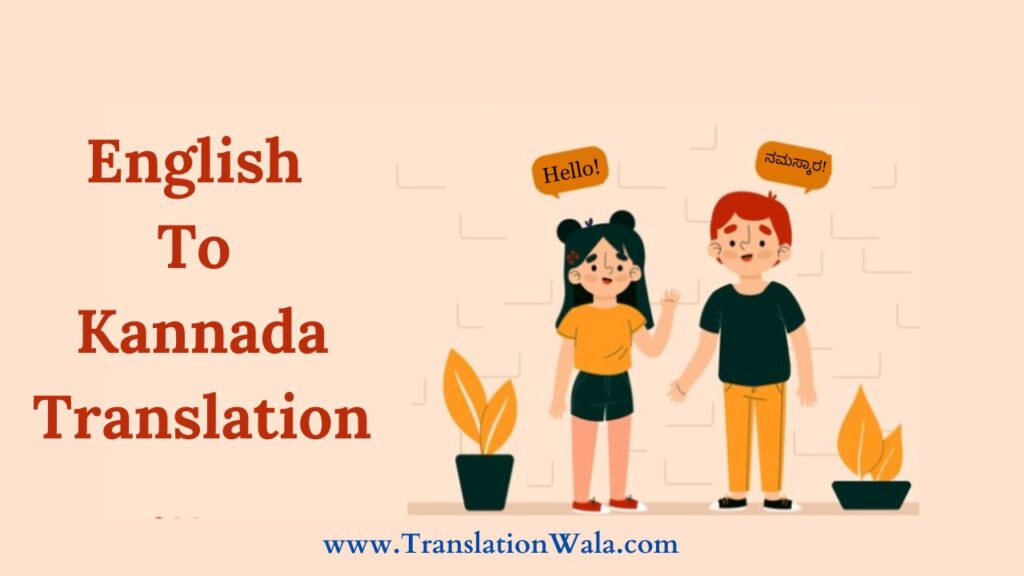India is like a colorful fabric, and each language adds its own unique threads of identity and expression. In the middle part of Karnataka, Kannada has a beautiful music that carries the memories of a great past and the hopes of a modern present. But as the world becomes more linked, learning how to speak both Kannada and English is essential for effective conversation. This blog talks about the complicated art of English to Kannada Translation and gives tips on how to say things in a way that is clear and important.
Understanding the Nuances: Beyond Literal Translations
Getting into the field of translation is like crossing a bridge between languages. It might be easy to think of it as just moving words from one language to another, but to really learn a language, you need to understand its culture, its idioms, and its core meanings. A lot of the time, literal versions fall short, leaving behind a hollow echo that doesn’t capture the original meaning.
A Kannada proverb says, “ಮನೆಗೆ ಬೆಂಕಿ ಹತ್ತಿದಾಗ ನೀರು ಬರುತ್ತದೆ” (Manege Benki Hattidaaga Neeru Baruthade). If you translated it literally, it would mean “When the house on fire, water comes,” which is not what the saying is about. The real meaning of it is to show how ironic it is that help only comes after a tragedy. For example, to translate “He kicked the bucket” into Kannada, you need to know about the culture and choose an informal phrase like ಅವನು ಕೊನೆಯುಸಿರನ್ನು ಎಳೆದರು (Avanu Koneyusiraannu Elederu).
Also Read: Telugu Tales: Mastering the Art of English to Telugu Translation for Impactful Communication

Embracing the Art: Strategies for Effective Translation
Learning how to English to Kannada Translation requires a lot of different skills. Here are some important things to remember:
- Deep understanding of both languages: A translation needs to know a lot about the language, spelling, and words of both English and Kannada. This means knowing the slang, colloquialisms, and regional differences in each language.
- Contextual awareness: It is very important to understand the background of the book. What kind of writing is it? Is it an official record, a relaxed chat, or an artistic piece? To make sure the translated text keeps its original tone and meaning, each situation calls for a different method.
- Cultural sensitivity: Cultural differences have a big impact on words. Translators need to be aware of cultural differences and avoid using words or references that the target audience might not understand.
- Creativity and adaptability: Many times, there may not be a straight translation for a word or term. When this happens, being creative and able to change quickly are very important. Finding the most similar word or phrase, or even using metaphors or paraphrases, can help get the message across clearly.
- Constant learning and refinement: The world of languages changes all the time. To make sure their versions are correct and have an effect, translators need to keep up with the latest language trends, new words, and changing cultural references.
Beyond Words: The Power of Impactful Communication
Mastering the art of English to Kannada Translation requires more than just technical skill. Building bridges between cultures, helping people understand each other, and making conversation easier are all part of it. With correct and detailed versions, information can get around easily, stories can be told in an honest way, and people from different groups can be heard.
Imagine that a farmer in the countryside of Karnataka could get important farming information that was only available in English before. Or think about a foreign worker who finds comfort and direction in their native Kannada language by reading translated court papers. These are just a few examples of how powerful effective translation can be.
If we learn how to translate from English to Kannada, the world will be a better place for everyone. Both languages are hard to learn, but we make sure that information, ideas, and events can flow easily between them. There is more understanding between countries and peoples because of this. Let’s paint a picture of how to understand one word at a time with the brush of translation.



